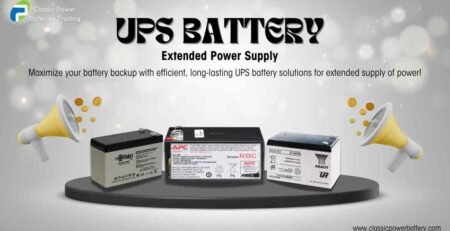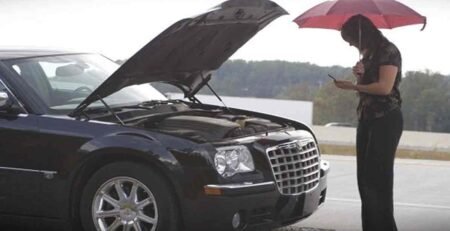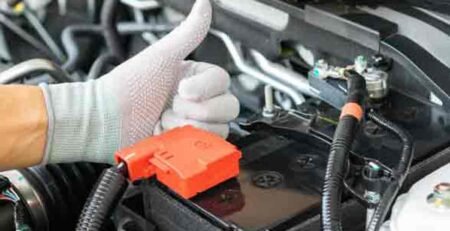Maximize Forklift Battery Life: Expert Tips to Keep Your Operations Running Smoothly
classicpowerbattery.com2025-07-25T13:07:50+01:00In a fast-paced industrial environment, every minute counts – and so does every piece of equipment. Forklifts are the unsung workhorses of warehouses, logistics hubs and production lines. But what powers them matters just as much. A sluggish or underperforming battery doesn’t just slow things down — it costs you time, money and efficiency.
If you’re running an electric forklift fleet, maintaining your batteries isn’t just good practice – it’s essential. We at Classic Power Battery Trading as battery experts serving all sectors, from industrial to automotive, solar battery storage, marine and golf cart applications, we know in & out about power. Let’s take a look at how to get the most out of your forklift batteries and keep your operations energized, day in and day out.
Forklift Battery Basics: Know What You’re Working With
When it comes to electric forklifts, there are two main types of batteries:
1. Lead-Acid Batteries
These are the traditional choice, known for their reliability and lower initial cost. They use lead plates and sulfuric acid to store energy and typically require regular maintenance like watering and cleaning. With proper care, a lead-acid battery can last up to 1,500 charge cycles.
2. Lithium-Ion Batteries
These are the modern alternative – maintenance-free, more efficient and with a lifespan of up to 3,000 cycles. While the upfront cost is higher, the long-term ROI is often better due to reduced downtime and superior energy retention.
Charge Wisely: Maximize Each Cycle
No matter the type of battery, charging habits can make or break your investment.
For Lead-Acid Batteries: Only charge when the battery hits 20-30%. Charging too early reduces the total number of cycles.
For Lithium-Ion Batteries: These support “opportunity charging,” meaning you can top them up during breaks without damaging the battery life.
Avoid topping off lead-acid batteries after every short use – each connection to the charger counts as a full cycle. Lithium-ion batteries don’t face this issue, which is why many companies are making the switch.
Maintain Your Forklift Batteries – Or Pay the Price
Just like forklifts, batteries need consistent care to deliver peak performance.
For Lead-Acid Batteries:
- Watering: Use only distilled water and never overfill. Top up every 5-10 charging cycles.
- Cleaning: Wipe away dust and acidic residues to prevent corrosion.
- Inspect Regularly: Look out for white sulphate crystals, which indicate the need for corrective maintenance.
For Lithium-Ion Batteries:
- Maintenance-free, but still benefit from visual inspections and proper handling.
Ignoring maintenance leads to reduced battery efficiency, shorter lifespan and the risk of unplanned downtime – something no operation can afford.
Don’t Let Heat and Cold Drain Your Battery
Temperature extremes can impact both the performance and lifespan of your batteries.
- Too Hot: Operating forklifts in environments with extreme temperatures can reduce battery life by up to 50%.
- Too Cold: Freezing temperatures slow down power delivery and can cut battery performance by 30%.
If your environment is temperature-sensitive, consider investing in batteries built for such conditions – we can help guide you to the right match.
Stop Running Forklifts on Empty
Running a battery down to 0% isn’t just inefficient – it’s dangerous for your forklift and expensive to fix.
- Keep operations above 20% capacity.
- If deep discharge occurs, ensure a full, uninterrupted charging cycle before next use.
- Running on low power can overheat your system, reduce hydraulic efficiency and even damage motors.
Skip the Rush: Be Cautious with Fast Charging
Need to top off mid-shift? Be mindful.
- Lead-Acid: Fast charging causes excessive heat, which damages cells and shortens battery life significantly.
- Lithium-Ion: More adaptable to fast charging and better suited for multiple short shifts.
We recommend speaking to an expert before integrating fast-charging stations into your routine – it’s a long-term investment that should match your workflow.
Rest Matters (Even for Batteries)
Short breaks during shifts allow batteries to cool down and stabilize, improving overall performance – especially for lead-acid units. Just don’t leave them sitting at low charge for too long, or you risk long-term degradation.
Spot the Signs Early: When to Replace
Even well-maintained batteries don’t last forever. Watch for these red flags:
- Frequent charging required
- Noticeable drop in power output
- White crystal buildup
- Shorter shift performance
If your forklift is showing signs of tired power, we’re here to help – whether that means expert guidance or premium-grade replacement batteries.
Powering Your Business Forward – One Battery at a Time
The right battery doesn’t just power your forklift – it powers your productivity, your uptime and ultimately, your bottom line.
At Classic Power Battery Trading, we’ve been trading in reliable, high-performance batteries for every application imaginable – forklifts, cars, solar systems, marine engines, golf carts and more. Whether you need help choosing between lead-acid and lithium-ion, setting up a maintenance plan, or sourcing long-lasting replacements, our team of experts is just a call away.
Let us help you supercharge your fleet. Because when your power supply is dependable, your operations become unstoppable.
Final Word from the Battery Experts
A forklift is only as powerful as the battery driving it. And when that battery runs smart, efficient and long – your entire business benefits.
Looking to boost battery life or upgrade your current fleet? We’ve got the perfect power solutions tailored to your needs.
Contact us at Classic Power Battery Trading today to explore our wide range of industrial battery options or speak to our experts for a custom solution.











